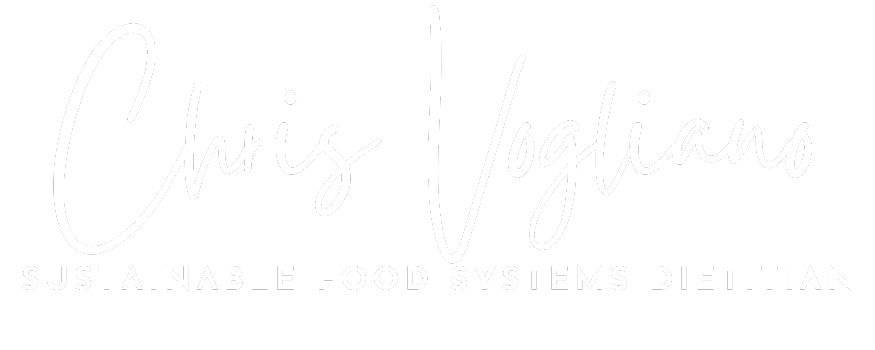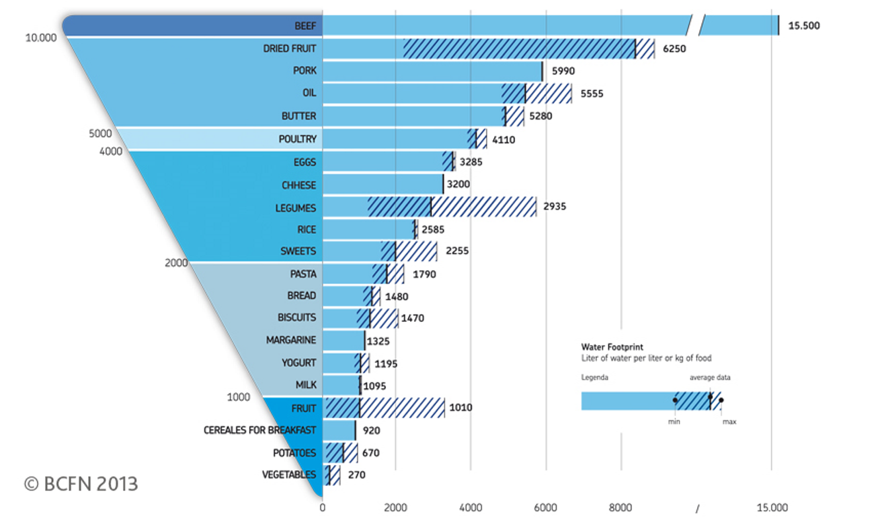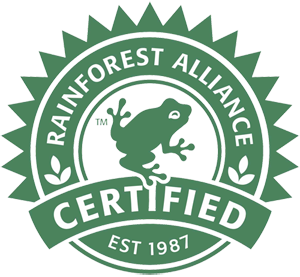Worried about climate change? Act now with your fork!
Climate change can often seem like an unsurmountable task to stand up against. It does't have to be. Many of foods we eat have a massive impact on our environment, while others have a much smaller impact. Find your favorite sustainable foods and get started today!
your diet can save the planet.
What we eat can have profound impacts on not only our own health, but also the health of the environment. A ridiculous amount of resources go into producing the food that we eat: water, fertilizer, pesticides, and fossil fuels to name a few. Nearly 80% of water and 20% of all greenhouse gas emissions are attributed to growing our food. (1,2)
Some foods have much higher greenhouse gas emissions than others, meaning we can actually have significant impacts on the health of our planet by what we choose to eat.
Lucky for us (and the planet), there’s significant overlap between foods that are good for us and have a lower environmental impact.
How do we eat a sustainable diet?
The graph below from The Barilla Foundation highlights the overlaps between what's good for us and the planet.
Source: Barilla BCFN Double Pyramid
So how do i make a difference? (Hint: It's easy)
- Be mindful of portion sizes; step one to reducing your 'food-print' is eating only what you need.
- Reduce the amount of food you throw away. Don’t lose track of your leftovers, and aim to be creative with what you have in the kitchen before opting to shop again. See my blog post on that here.
- Choose sustainable protein options (list below). The livestock industry is incredibly carbon intensive. Reducing your meat consumption is the fastest way to reduce your environmental “food-print”.
- Consume dairy products in moderation.
- Choose fish and seafood sourced from certified fisheries such as http://www.seafoodwatch.org/
- Limit consumption of foods high in fat, sugar or salt and low in nutrients (chips, confectionery, sugary drinks).
- Opt for tap water over other beverages – particularly soft drinks
Top Sustainable Protein Options:
- Lentils (red, yellow, green, black, and so many more!)
- Tofu
- Tempeh
- Beans (black, chickpeas, red, etc.)
- Quinoa
- Amaranth
- Soy / Hemp Milk (has highest protein content of all milk alternatives)
- Green Peas
- Hemp / Chia Seeds
- Nuts and nut butter (cashews, peanuts, etc.)
The water we eat.
The amount of water that goes into producing the food we eat is often overlooked, and it extraordinarily high. Many regions of the world in which our food is produced are expected to experience dramatic weather pattern changes due to climate change. Choosing foods that use less water is also a great way to reduce our food-print. See chart below for more information.
Note: Graph is in liters per kg of food.
Thanks for reading - let me know how you are reducing your carbon footprint in the comments below!
- Chris the Dietitian
References
- Tilman, D., & Clark, M. (2014). Global diets link environmental sustainability and human health. Nature, 515(7528), 518–522. https://doi.org/http://www.nature.com/nature/journal/v515/n7528/full/nature13959.html
- http://www.goodforyougoodfortheplanet.org/cross-issues/double-pyramid/
- Adapted from: Garnett, T. (2014). Changing What We Eat: A Call for Research and Action on Widespread Adoption of Sustainable Healthy Eating. Food Climate Research Network
Main photo credit: Pixabay - https://pixabay.com/en/fork-lake-vevey-switzerland-2104990/
3 tips for consuming coffee MORE mindfully - how you can make a difference
Let's be honest - coffee is absolutely delicious. I love coffee in almost fashion - from soy lattes, to ultra-hipster cold brew, or even just a plain and simple drip. Coffee and I's relationship ebbs and flows (mostly flows) depending on my work load and/or the number of consecutive grey, rainy days here in Seattle. We are known for our coffee for a reason, after all - and it's damn good I might add!
As someone who loves learning about sustainable food systems, I couldn't help to wonder - where does our $3.50 go each time we purchase a craft beverage from our local barista? What is the environmental impact?
3 simple ways you can be more mindful when consuming your beloved cup of coffee:
CONSIDER THE WATER:
It takes ~50 gallons of water to make a latte (including the cup, sleeve, lid and milk). That's actually quite a bit considering that America is the largest consumer of coffee. To put this in perspective - a standard bathtub filled to the brim is only 24 gallons. More on that here. I know I personally can consumer 2-4 cups a day without batting an eye. This is where the mindful consumption piece comes in.UNDERSTAND THE ENVIRONMENTAL IMPACT:
Growing coffee requires A LOT of land, and not all coffee is grown equally. Many farms buzz down the natural landscape to create room for these caffeine-packed bushes, destroying the natural ecosystem of the land. This is not so great if we are looking to sustain our environment for the future. Luckily there's a simple solution to help with this. Look for coffee that is Shade Grown or bears the Rainforest Alliance Certified symbol (see below). This means the coffee is grown in matrimony with the natural environment, which helps maintain the land's biodiversity. Albeit not 100% perfect, it's a great start - and it's easy.
More on why coffee growers choose shade grown here, and more on what Rainforest Alliance Certification means here.VOTE WITH YOUR DOLLAR FOR FAIR LABOR PRACTICES:
Coffee is typically grown in very poor parts of the world. Many coffee farmers earn less than $2.00 a day. The contrast between their salaries and our hefty prices can make you start to question why we are paying $3.50 per cup. The good news is that there's a third party organization that helps to ensure fair business practices for farmers. Look for the Fair Trade symbol (see below). This verification ensures the farmers are treated fairly and paid a living wage, which can often translate to providing food for low-income famers, or even sending their kids to school. This is also a very good thing. More on the importance of fair trade coffee here.
SUMMARY
So we can continue to love coffee (trust me, I do), but we should also be consiencious about how much we consume (water), how it's grown (environment), and who grew it (fair labor practices). Since we can't go to our local farmers market and meet the coffee grower first hand (unless you live in Central America, perhaps), we can check for the two verification symbols - rainforest alliance certified and fair trade. If you purchase coffee at your local shop, ask your barista (preferably the one with the mustache) about where they source their beans. If they aren't sure, have them find out. Start the conversation - this is how change is made. These small details may seem insignificant, but they can make a world of a difference for both farmers and our the health of our lovely planet.










